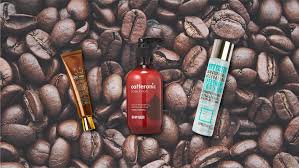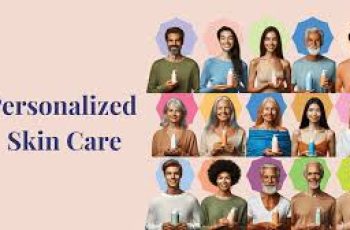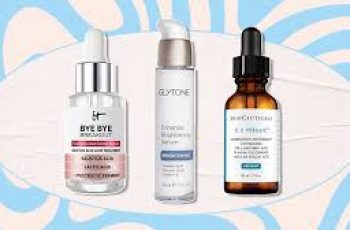
Caffeine in Skin Care: A Comprehensive Guide
Caffeine has become a popular ingredient in skin care products. It is valued for its ability to combat skin aging and reduce facial redness.
Derived naturally from plants like tea leaves and coffee beans, caffeine offers multiple skin benefits.
What is Caffeine?
Caffeine is a plant-based chemical in the methylxanthine family. It acts as a stimulant by blocking adenosine receptors in the body.
Found in teas, coffees, and other plants, it’s one of the most common antioxidants consumed worldwide.
Despite the similar name, caffeine is not related to caffeic acid. It is a simple chemical compound, neither an oil nor an acid, and it has a neutral pH.
How Does Caffeine Work in Skin Care?
Caffeine is both an antioxidant and anti-inflammatory agent. These properties make it effective for treating conditions like sensitive skin and rosacea.
As an antioxidant, caffeine neutralizes free radicals, harmful molecules that accelerate skin aging.
Its anti-inflammatory effects help reduce redness and swelling by constricting blood vessels, a process called vasoconstriction.
Absorption and Skin Penetration
When applied topically, caffeine penetrates the skin quickly.
Due to its small, hydrophobic structure, caffeine crosses the skin’s outer barrier (stratum corneum) and enters deeper layers like the epidermis and dermis.
Studies show that within 5 to 10 minutes, over 99% of topical caffeine is absorbed and becomes available to act on skin cells. This absorption rate makes caffeine an effective ingredient in topical products.
Compatibility with Other Ingredients
Caffeine dissolves well in water and various cosmetic solvents. It remains stable under heat and across a wide pH range, making it easy to formulate in creams and serums.
However, caffeine can interact with some amino acids and peptides. For example, it can bind with arginine, glycine, and proline, reducing their availability.
It may also interfere with copper peptides and antioxidants like vitamin C.
If your skincare contains peptides, avoid combining them with caffeine products without professional advice. Generally, caffeine is used at 1-5% concentration in formulations.
Anti-Inflammatory Effects
Caffeine helps calm inflamed skin by blocking inflammatory pathways. It inhibits enzymes like COX-2 and decreases pro-inflammatory cytokines such as IL-6 and TNF-alpha.
By narrowing blood vessels, caffeine reduces redness, swelling, and puffiness. This vasoconstriction also promotes drainage of excess fluids, which eases skin discomfort and visible inflammation.
Additionally, caffeine’s ability to neutralize oxidative stress further reduces inflammation triggered by free radicals.
Antioxidant Benefits
Caffeine neutralizes harmful reactive oxygen species (ROS), such as superoxide anions and hydroxyl radicals. These ROS can damage skin cell lipids, proteins, and DNA, speeding up aging.
Besides scavenging free radicals, caffeine boosts the skin’s own antioxidant defenses. It activates enzymes like glutathione S-transferase and catalase, enhancing the skin’s ability to protect itself.
Caffeine also regulates Nrf2, a transcription factor that controls genes involved in the antioxidant response. Together, these actions shield the skin from UV radiation, pollution, and environmental stressors.
Caffeine’s Role in Skin Aging
Oxidative damage contributes heavily to skin aging. Caffeine’s antioxidant effects help slow down this process, protecting skin cells from damage that leads to wrinkles and loss of elasticity.
Moreover, caffeine stimulates autophagy—a cellular recycling process that removes damaged components inside skin cells. By activating autophagy, caffeine helps skin maintain its youthful function longer.
It does this by interacting with skin cell receptors called A2ARs, triggering proteins like SIRT3 and AMPK. These proteins boost the autophagy system, clearing out toxic free radicals and damaged structures.
By preventing the buildup of damaged parts, caffeine also reduces the chance of cells entering senescence—a dormant state linked to aging skin changes.
Reducing Facial Redness and Rosacea
Because caffeine is a vasoconstrictor, it narrows blood vessels near the skin surface. This reduces blood flow in superficial capillaries, minimizing facial redness and visible broken veins.
People with rosacea or flushed skin benefit from caffeine’s ability to calm these symptoms. Applying caffeine topically helps improve skin appearance by controlling inflammation and reducing redness.
Puffy Eyes and Under-Eye Bags
Caffeine’s blood vessel narrowing effect also reduces puffiness and dark circles under the eyes. By shrinking dilated vessels, it improves circulation and drainage, resulting in a refreshed, less tired look.
Cellulite Reduction
Cellulite is caused by fat cells swelling with fluid and pushing against the skin, creating a dimpled effect. Caffeine and related methylxanthines like theophylline help reduce cellulite by shrinking fat cells.
They inhibit phosphodiesterase, which prevents the breakdown of cyclic AMP in fat cells. This encourages fat release and fluid drainage, smoothing the skin’s surface.
Topical creams with caffeine or aminophylline can improve the appearance of cellulite on thighs, buttocks, and stomach by reducing puffiness and encouraging fat metabolism.
Is Caffeine Safe for Skin?
Caffeine is generally very safe for use in skin care. Allergies are rare, and side effects are minimal.
Since caffeine is a stimulant, excessive ingestion can cause jitteriness, nausea, or headaches. However, topical use does not typically produce these systemic effects.
Regulatory bodies like the Cosmetic Ingredient Review (CIR) and Environmental Working Group (EWG) consider caffeine safe in cosmetic products. EWG gives caffeine a low hazard score of 1.
If you have sensitive or inflamed skin, caffeine can be a soothing option. Still, if you’re unsure, consulting a dermatologist or taking a skin type quiz can help you decide.
Using Caffeine in Acne-Prone Skin
Caffeine helps acne by reducing inflammation but does not kill acne-causing bacteria directly. It is not comedogenic, so it won’t clog pores.
For antimicrobial or exfoliating effects, other ingredients like azelaic acid or tea tree oil are better choices. Caffeine is most effective as an anti-inflammatory boost in acne treatments.
Pairing Caffeine with Other Anti-Aging Ingredients
To maximize anti-aging results, combine caffeine with ingredients that stimulate collagen and hydration.
Good companions include coenzyme Q10, hyaluronic acid, retinoids, and vitamin C. These ingredients support skin repair and help reduce wrinkles alongside caffeine’s antioxidant protection.
How to Incorporate Caffeine in Your Routine
Look for caffeine in serums, eye creams, lotions, and masks designed to reduce puffiness, redness, and signs of aging.
Remember, caffeine works best at concentrations of 1-5%. Always check product labels for compatibility with your other skincare items, especially if they contain peptides.
To personalize your skincare, find out your Baumann Skin Type and choose caffeine-based products tailored to your needs.
Final Thoughts
Caffeine is a versatile, safe, and effective ingredient in skin care. It offers antioxidant protection, reduces inflammation, and supports anti-aging by boosting autophagy.
From calming rosacea and reducing under-eye puffiness to smoothing cellulite and protecting against UV damage, caffeine plays many beneficial roles.
If you’re looking for a natural, scientifically backed ingredient that can enhance your skincare regimen, caffeine is worth considering.


